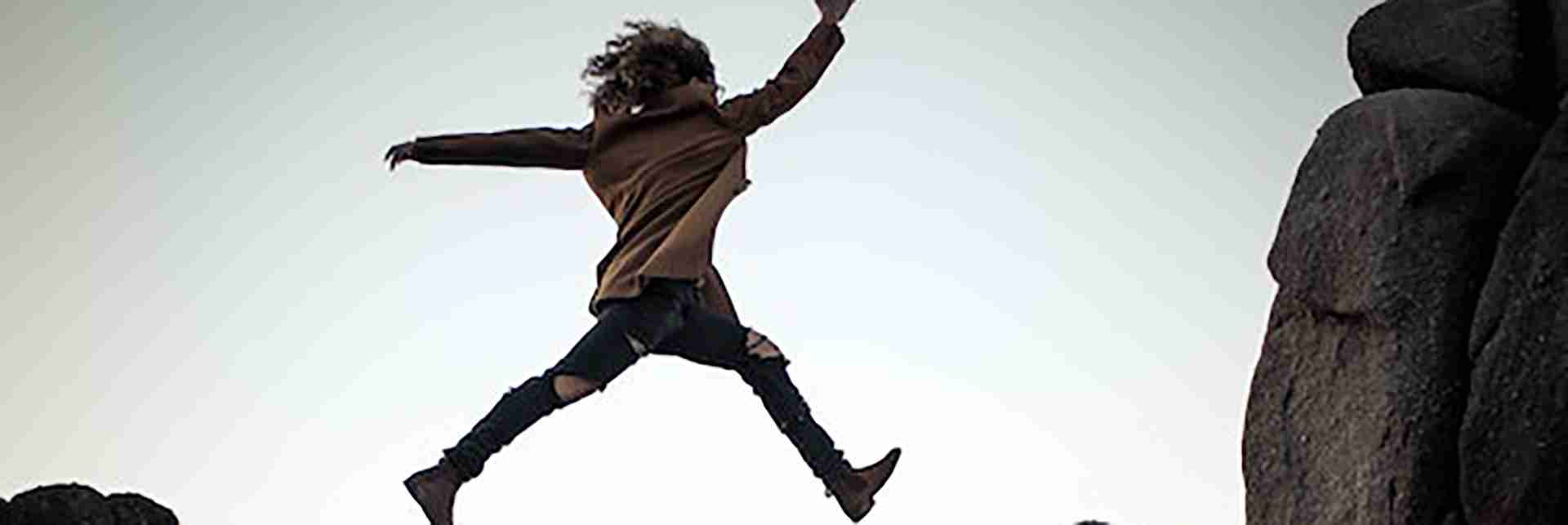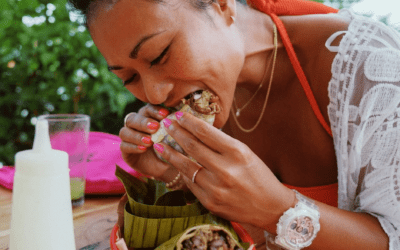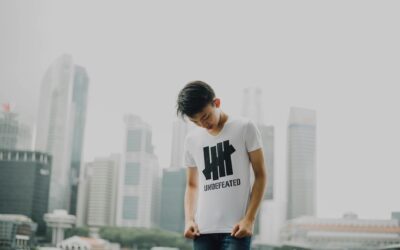Modern societies were built on the successful management of risk at an everyday level on the principle that if individuals trust each other, it will pose minimal, if not any harm to self and that public institutions exist to create safe public spaces.
When encountered with threats such as crossing a street with heavy traffic, paragliding during a holiday or deciding to change city for a new job – risk mitigation tends to rely on information, personal precedent and social norms which impart a sense of control and choice over the situation. These are calculated actions taken in the hope of unlocking opportunities and potential growth or rewards.
At a social level, risk affects communities at a broader level, with far reaching impact – like environmental pollution, rising sea levels causing floods and sinking coastal cities around the globe. Such situations require expert intervention and direction, especially from social, political and medical institutions, to build trust amongst individuals so they can feel safe.
Today, science and technology are the biggest contributors in risk mitigation, be it at an individual or societal level. These disciplines aid in our understanding of the natural world, allowing us to design risk aversive interventions where needed. As such, we trust the food supply chain to provide us with sustenance so we don’t have to grow our own food at home, in our political systems to manage public safety, and in our medical and scientific institutions to generate knowledge and help us develop tools for greater human ambitions.
However, new risks such as COVID-19 have exposed the limitations of the existing systems that we have relied on thus far. Acute proliferation of COVID-19 across the globe has clearly shown us that this pandemic cannot be managed through known processes and structures, requiring new systems to tackle the uncertainness of the current situation.
The peculiarity of the current crisis is that not only does the outside world pose extreme danger and risk, people themselves pose a hazard to each other. Countries around the world remain in lockdown, and “social distancing” measures remain prevalent, framing it as a collective responsibility to re-establish safety and security for all.
While a more permanent solution is being sought at an institutional level, we can see an emergence of a counter culture, devised at an individual and / or collective level to provide a sense of security and calm.
The emerging counter culture is observed at 3 levels: 1. Bound in faith and religion 2. Bound in Science 3. Bound in new rituals
Each of these “levels” reveal the logic with which individuals make sense of the new risks and lasting impact associated with COVID-19. It also points to the potential direction of “a new normal” where both individuals and systems adapt with new habits, mindsets and norms.
Risk Mitigation Bound in Religion Before welfare systems were organised to distribute shared resources to citizens, they turned to religion – organised or unorganised for assurance and protection. Two different religious perspectives currently dictate attitudes towards COVID-19.
Firstly, the pandemic is a pre-ordained form of suffering for human sins e.g. over-consumption, environmental destruction and various other sins. Secondly, that this is a collective test of faith sent from the gods.
Some form of reaction to the first perspective have emerged. For example, some Muslims have resorted to ‘tawakkul’ (spiritual reliance) to protect the righteous – “Allah is protecting those who abide by their obligations”. Resultant behaviours include dialling up the frequency and variety of ritual repertoire as a spiritual shield against the virus, such as performing daily ablutions and prayers with increased vigour.
Elsewhere in India, prayer and exhortations to gods have peaked, as it did during the 1918 flu pandemic. Chanting sessions, yoga, cow urine and cow dung baths have been part of the slew of purported Hindu cures flooding official media channels. The culmination of these efforts are aimed at distinguishing oneself as ‘worthy’ of being spared. Forms of reaction to the second perspective; that of humanity being tested, are more nuanced. Keeping the faith includes taking a stoic approach. Stoic in the form of ‘hunkering down’ and strengthening personal faith, while at the same time, being active in helping the larger community.
For organised religions, social distancing regulations have created a void that places of worship used to fill spiritually and socially. The dis-embedding of the believer to both religious figures of authority and community further heightens this insecurity.
To this, many have brought religious worship online and solely into the domestic sphere. For example, a Google Trends search saw an increase in Catholic terms such as ‘Pope Francis’ rise by 350% in the last 3 months, and queries such as ‘coronavirus prayer’ increasing. Pope Francis’s prayer for protection against Covid-19 was viewed more than two hundred thousand times since March. Pew Research Centre also found an increase in non-believers turning to prayer, a 24% increase from before the outbreak.
Efforts to strengthen community help have also taken place concurrently. Mosques worldwide, such as the Rahmatan Lil Alamin Foundation in Singapore, have started fundraising efforts to channel resources to the needy. Similarly, Pope Francis’s Commission for COVID-19 utilising Caritas Internationalis aims to provide health care services globally. Personal involvement in such charitable behaviours are also seen as proactive faith ‘in action’.
Risk Mitigation guided by Science A Canadian blogger reviewing her new COVID routine wrote, “As the COVID-19 pandemic forces us to give up old routines for new, it has become a part of our family’s daily routine to gather on our front porch every evening at 7p.m in order to join in the neighbourhood chorus of clapping and pot-banging. This phenomenon, undertaken as a means of acknowledging our community’s healthcare workers, and the good work they are doing, has been picking up volume and momentum with every passing day. COVID-19 is a health emergency and as experts and field specialists, health workers are seen as the key to deliverance from the current situation.
Many similar communal shout outs have been witnessed across continents, celebrating the efforts of the new frontline warriors. Iran recently announced that the country will designate medical staff who have died from COVID-19 as “martyrs,” giving them the same honour as slain soldiers. Parallel to the popular sentiment, Google also launched a Doodle to thank scientific researchers as well as health care professionals, captioned, “To all the public health workers and to researchers in the scientific community, thank you.”
Countries that followed risk mitigation strategies by relying on the counsel of trained physicians, nurses, and public health officials, have been able to better manage the spread of the pandemic. One such example is New Zealand: Shaun Hendy, professor at the Faculty of Science at Auckland University, says this strong working relationship with the science community has put New Zealand at an advantage compared with countries which “have had difficult relationships with their science community in recent times.” Science and the expertise of health practitioners is a source of hope and promise of future – potentially altering people’s perspective towards science and medicine.
What is unknown is that once the pandemic settles and the curve has been flattened, would the reliance, faith and trust in medical systems strengthen, and will medical expertise gain even more patronage from people and government?
Risk Mitigation Bound in Everyday Rituals Anthropologists have long observed that people across cultures tend to perform more rituals in times of uncertainty. Stressful events such as warfare, environmental threat, and material insecurity are often linked with spikes in ritual activity. Rituals are not based on science or religion, but are an effective way to relieve anxiety and stress as it provides a sense of control and predictability. It imposes order in an chaotic everyday life.
Enforced physical distancing has compelled people to recalibrate their routine and lifestyle. This has resulted in the emergence of new rituals, as individuals and collective community, to introduce order and stability in everyday life.
Across globe we observe that rituals are being adopted to gain a sense of connection, purpose and motivation. While all forms of socialisation have shifted to virtual platforms, the desire for real human connection has intensified. In an attempt to reinforce communal connection, imaginative collective rituals are emerging that allow people to participate in unison – giving a sense of belonging and acceptance, while still practicing physical distancing.
In one of the twenty-plus mass-quarantine centres in Wuhan, the megacity where this coronavirus first emerged, women turned to karaoke to lift the spirits of sequestered groups. In Iran, another of the COVID-19 “red zones,” doctors and nurses—individually and in groups— participated in a coronavirus dance challenges, posting videos of themselves dancing to lively music in hazmat suits.
People under lockdown are stepping into the balcony at night, flinging open the window and clapping and cheering for health-care workers battling with the pandemic. The ritual migrated from the Chinese epicentre of Wuhan to the global front, from London to Milan, Madrid, Paris, New York, Melbourne, Istanbul and other cities.
Purpose driven rituals on the other hand are mostly driven by the need to gain a sense of normalcy and control in the quarantines routine. A third-grade teacher in Iran, Khuzestan Province, improvised to keep her classes going online after schools were closed nationwide. Stuck at home, she used the side of her refrigerator as a whiteboard. With a blue marker, she wrote out the rules, with diagrams, to explain how to calculate the area of squares, rectangles, and triangles.
At a more mundane level, with endless days spent at home, families are observed to use rituals to create a schedule such as “movie night” with their families or “Lego time” with their kids as ways to cope with anxiety and create certainty.
Many individual and communal rituals have been adopted across the globe in the hope to motivate people and uplift the mood. From comedian Jimmy Kimmel and his wife encouraging quarantined people to hold formal Fridays, dressing up for dinner even if they were alone to the outburst of new rooftop and balcony culture, neighbourhoods are coming together to strengthen a sense of solidarity and remind each other that no one is alone in this crisis.
In conclusion, while most people are still adjusting to the new way of life that requires physical distancing, there is an evident surfacing of new behaviours and countercultures in the hope to manage and mitigate risk.
While some of these new rituals may be temporary, others may become a part of the new everyday life, post pandemic. This would inadvertently have an impact on consumer consumption and behaviour – while some may attempt to return to normalcy, others may find comfort in adoption of risk averse behaviour, codifying some of the aforementioned emerging counter-culture behaviour, rituals and mindset.
As brands, we need to keep a keen eye out on these new adopted rituals and behaviours to be able to adapt our products, schemes and services such that it remains relevant in the new lives of consumers.






